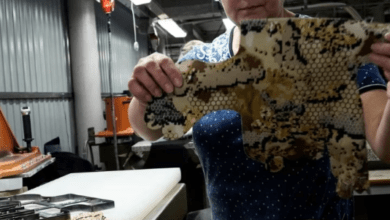Fashion’s Business: Money Advice for Independent Designers and Stylists

Independent designers and stylists confront particular difficulties when it comes to handling their funds in the fast-paced world of fashion. Being your own boss might provide you with a lot of freedom and flexibility, but it also comes with the burden of managing your business taxes and finding the best ways to save money on taxes. In this post, we’ll look at some crucial financial hints for self-employed designers and stylists who want to succeed financially while navigating the complicated world of taxes.
Understanding and optimizing their tax savings is one of the biggest obstacles that freelancers encounter. Self-employed people must pay their own taxes, including self-employment tax, as opposed to regular workers. Inappropriate management of this levy, which pays for Social Security and Medicare, might result in a heavy burden. Utilizing instruments like the IRS self-employment tax calculator is essential to ensure correct computations and prevent any surprises. By estimating their 1099 tax obligations and making proper plans, freelancers may use this calculator to make sure they are saving the right amount of money throughout the year.
Understanding the tax ramifications of being categorized as an independent contractor is another essential element for freelance designers and stylists. Because they frequently take on projects on an individual basis, freelancers are frequently seen as independent contractors as opposed to employees. Independent contractors are accountable for paying both the employer and employee halves of Social Security and Medicare taxes, which has important tax ramifications. Making correct calculations of these taxes using tools like the Social Security income tax calculator is crucial to preventing any unpleasant shocks. Freelancers may make informed financial decisions and prevent any unpleasant tax surprises by evaluating these costs.
Self-employed stylists and designers must handle the complicated world of company taxes in addition to self-employment tax and Social Security tax obligations. To save as much money as possible on taxes, it is essential to know which expenses are deductible and how to keep track of them. Independent contractors might use a company tax calculator to make this procedure simpler. To make sure that no deductible item is missed, this tool aids in categorizing and tracking spending. Self-employed people can lower their taxable income and, in turn, their tax burden by keeping meticulous records of their outgoing costs.
Making insufficient financial separations between personal and professional accounts is a typical error made by independent designers and stylists. There may be misunderstandings and significant tax repercussions if personal and corporate spending are combined. It is crucial to register a separate business bank account and use it just for financial activities relevant to your company in order to prevent this. Having a clear line between personal and company spending thanks to this division not only makes record-keeping simpler but also makes it simpler to identify deductible expenses during tax season.
Setting up a strategy for monitoring earnings and outgoing costs is another essential financial advice for independent designers and stylists. Software for accounting or simply a straightforward spreadsheet can be used for this. Freelancers may maintain accurate financial records and get a clear picture of the financial health of their firm by meticulously tracking all revenue and spending. Not only does this assist with tax preparation, but it also offers insightful data on the company’s profitability.
Self-employed people may find it difficult to manage their money and taxes, but getting expert assistance may ease their concerns and guarantee that they are following tax laws. Working with freelancers and small businesses is a specialty area for certified public accountants (CPAs), so hiring one of these CPAs might be a smart move. The complexity of the tax law can be navigated, viable deductions can be found, and appropriate tax files can be made with the assistance of a CPA. The long-term advantages of working with a reputable financial counselor may surpass the initial cost, notwithstanding the possibility of a fee.
Conclusion: When it comes to handling their cash, independent designers and stylists confront particular difficulties. For them to succeed financially, they must maximize tax savings and file taxes correctly. Freelancers may determine their tax burden and make plans appropriately by using resources like the IRS self-employment tax calculator, Social Security income tax calculator, and business taxes calculator. Additionally, keeping your personal and company funds separate, keeping an account of your earnings and spending, and getting expert assistance from a CPA may all be quite helpful in navigating the complicated world of taxes. Self-employed designers and stylists can maintain their financial security while concentrating on their artistic endeavors with proper planning and money management.






